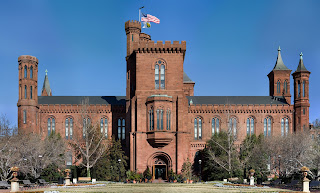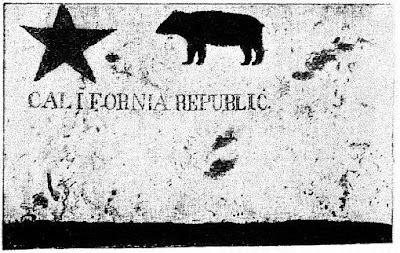 |
| Smithsonian Building, Washington, D.C. Public domain image from Wikimedia Commons. |
On Museum Day, hosted annually by Smithsonian magazine, participating museums
across the United States
Below is a list of participating museums in Southern
California counties with links to their websites. Whether you are interested in music, art, science,
living history, or something else entirely, you will surely find a museum in Southern
California that appeals to you.
Remember that in order to get free admission on Museum Day, you must have an official ticket available at the Smithsonian website!
Kern County Museum, Bakersfield
Maturango Museum, Ridgecrest
American Museum of Ceramic
Art, Pomona
Autry National Center, Los
Angeles
California
Science Center, Los Angeles
Chinese American Museum,
Los Angeles
Fowler Museum at UCLA,
Los Angeles
Hammer Museum, Los
Angeles
Los Angeles Art Association,
Los Angeles
Los Angeles Museum of the
Holocaust, Los Angeles
Museum of Latin American Art
(MOLAA), Long Beach
Palos Verdes Art
Center, Rolling Hills Estates
Pasadena Museum of
California Art (PMCA), Pasadena
Santa
Monica Museum of Art, Santa Monica
The GRAMMY Museum at
L.A. LIVE, Los Angeles
The Museum of Contemporary
Art, Los Angeles
Zimmer Children’s
Museum, Los Angeles
Bowers Museum of Cultural
Art, Santa Ana
International
Surfing Museum, Huntington Beach
Laguna Art Museum,
Laguna Beach
Mission San Juan
Capistrano, San Juan Capistrano
Living Desert Zoo
& Botanical Gardens, Palm Desert
S.C.R.A.P. Gallery,
Indio
Western
Science Center, Hemet
Barona Cultural
Center & Museum, Lakeside
California Surf Museum,
Oceanside
Lux Art Institute,
Encinitas
Marston
House Museum, San Diego
Mingei International Museum,
San Diego
Museum of
Making Music, Carlsbad
Museum of Photographic Arts,
San Diego
Reuben H. Fleet Science
Center, San Diego
San Diego Air
& Space Museum, San Diego
San Diego
Archaeological Center, Escondido
San Diego Botanic Garden,
Encinitas
San Diego Chinese Historical
Museum, San Diego
San Dieguito Heritage
Museum, San Diego
The Adobe Chapel
Museum, San Diego
The Whaley House Museum,
San Diego
Charles Paddock
Zoo, Atascadero
Historical
Glass Museum, Redlands
The Robert and Frances
Fullerton Museum of Art, San Bernardino
Wignall
Museum of Contemporary Art, Rancho Cucamonga
Casa de la Guerra, Santa
Barbara
El Presidio de Santa Barbara
State Historic Park, Santa Barbara
Elverhoj Museum of
History & Art, Solvang
Rancho La Patera &
Stow House, Goleta
Wildling Art Museum,
Los Olivos
Carnegie Art Museum,
Oxnard
Museum of Ventura
County, Ventura
© 2011 Denise Spurlock, Ancestral Trees Research



